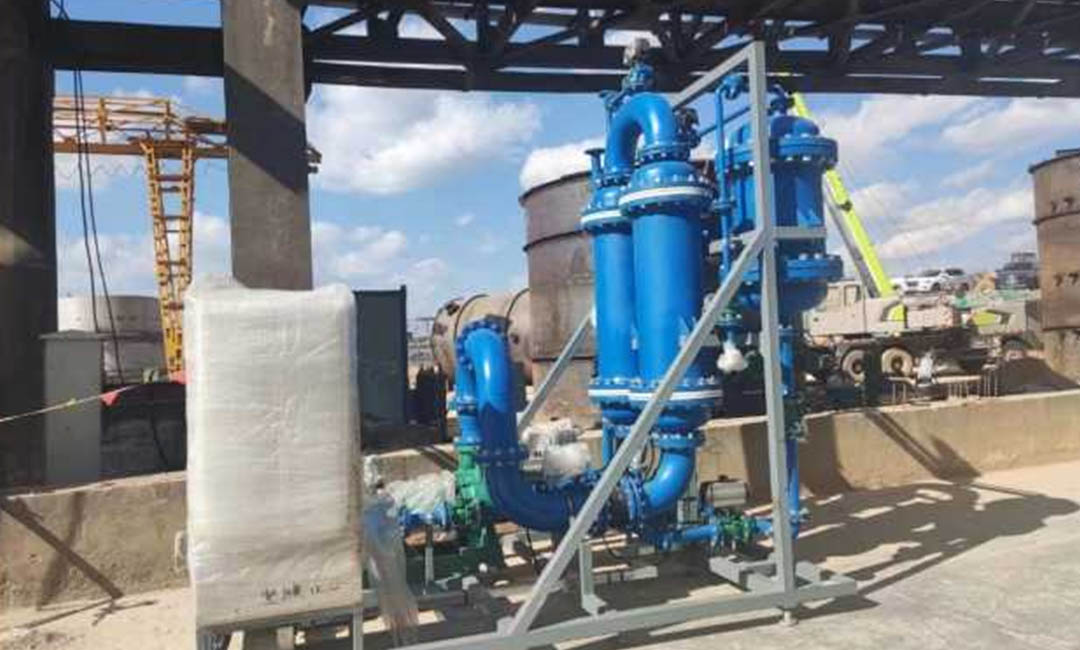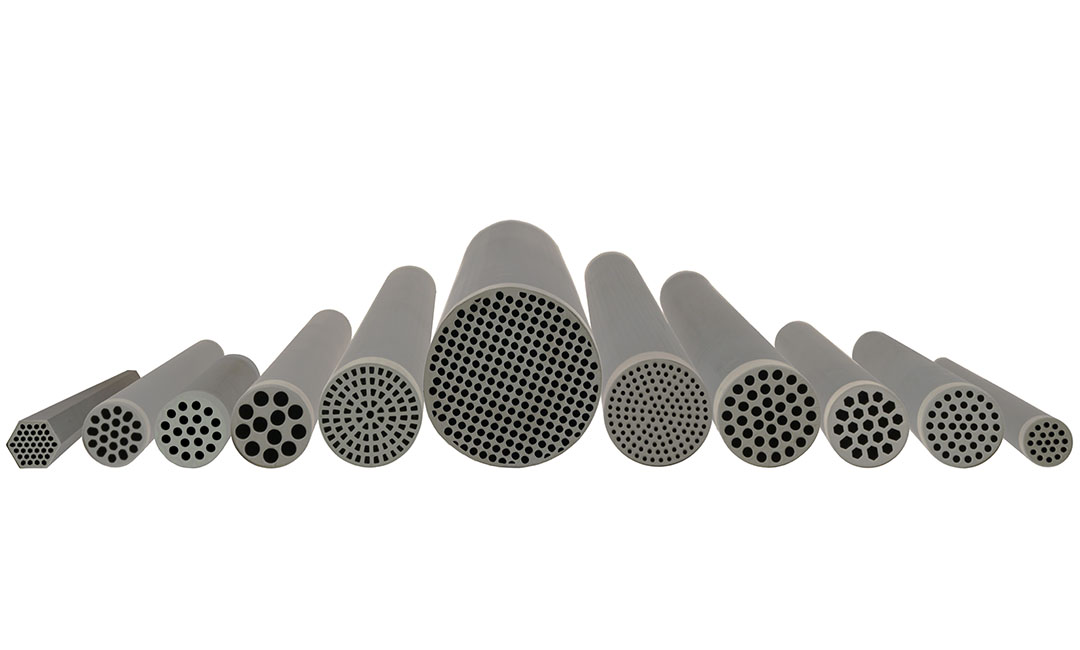Mechanisms of Water Permeation in Hydrophilic SiC Membranes
The mechanisms of water permeation in hydrophilic silicon carbide (SiC) tubular membranes are a fascinating area of study, particularly due to their significant implications for water treatment and filtration technologies. Understanding these mechanisms requires a comprehensive examination of the unique properties of hydrophilic SiC membranes, which are characterized by their high porosity, mechanical strength, and chemical stability. These attributes make them particularly effective in facilitating water flow while simultaneously rejecting contaminants.
At the core of water permeation in hydrophilic SiC membranes is the interaction between water molecules and the membrane surface. The hydrophilic nature of these membranes arises from the presence of functional groups that attract water molecules, thereby enhancing wettability. This wettability is crucial, as it allows water to spread across the membrane surface rather than forming droplets, which would hinder permeation. Consequently, the affinity of water molecules for the membrane surface plays a pivotal role in determining the overall permeation rate.
As water molecules approach the membrane, they encounter a network of pores that vary in size and distribution. The size of these pores is critical, as it dictates which particles can pass through while retaining larger contaminants. The mechanism of water permeation can be described through a combination of diffusion and convection processes. Initially, water molecules diffuse through the membrane’s porous structure, driven by a concentration gradient. This diffusion is influenced by the size of the pores and the viscosity of the water, with smaller pores typically resulting in slower permeation rates due to increased resistance.
Moreover, the hydrophilic nature of the SiC membrane enhances the diffusion process by reducing the energy barrier for water molecules. This phenomenon is often described by the Hagen-Poiseuille equation, which relates the flow rate of a fluid through a cylindrical pore to the viscosity of the fluid and the pressure gradient across the membrane. As water molecules permeate through the membrane, they are subjected to a pressure differential, which further facilitates their movement. This interplay between pressure and concentration gradients is essential for optimizing the filtration process.
In addition to diffusion, convective flow also contributes to water permeation in hydrophilic SiC membranes. When a pressure is applied, water is forced through the membrane, and this bulk flow can significantly enhance the overall permeation rate. The combination of diffusion and convection creates a synergistic effect, allowing for efficient filtration even in the presence of high concentrations of contaminants. This is particularly advantageous in applications such as wastewater treatment, where the removal of suspended solids and dissolved organic matter is critical.
Furthermore, the stability and durability of hydrophilic SiC membranes under various operating conditions cannot be overlooked. Their resistance to fouling and scaling is a significant advantage, as it ensures consistent performance over time. The ability to maintain high permeation rates despite the presence of contaminants is a testament to the effectiveness of these membranes in real-world applications.
In conclusion, the mechanisms of water permeation in hydrophilic SiC tubular membranes are complex yet fascinating, involving a delicate balance of diffusion, convection, and the unique properties of the membrane material. As research continues to advance in this field, the potential for optimizing these membranes for various filtration applications remains promising, paving the way for more efficient and sustainable water treatment solutions. The ongoing exploration of these mechanisms not only enhances our understanding of membrane technology but also contributes to the development of innovative strategies for addressing global water scarcity challenges.
Comparative Analysis of Hydrophilic vs. Hydrophobic Membrane Performance
The performance of membranes in filtration processes is significantly influenced by their hydrophilic or hydrophobic nature, which determines their interaction with water and solutes. Hydrophilic membranes, characterized by their affinity for water, facilitate the passage of water while effectively rejecting contaminants. In contrast, hydrophobic membranes repel water, which can lead to different filtration dynamics. A comparative analysis of these two types of membranes reveals critical insights into their operational efficiencies, fouling tendencies, and overall applicability in various filtration scenarios.
Hydrophilic membranes, such as hydrophilic silicon carbide (SiC) tubular membranes, exhibit enhanced permeability due to their ability to attract and hold water molecules. This property not only improves the flux rates but also minimizes the energy required for filtration processes. The increased water affinity allows for a more uniform distribution of water across the membrane surface, which is crucial in applications such as microfiltration and ultrafiltration. Furthermore, the hydrophilic nature of these membranes reduces the likelihood of fouling, a common challenge in filtration systems. Fouling occurs when particles, colloids, or biological matter accumulate on the membrane surface, leading to decreased performance and increased maintenance costs. Hydrophilic membranes tend to resist fouling more effectively than their hydrophobic counterparts, as the water layer that forms on their surface acts as a barrier to the deposition of foulants.
On the other hand, hydrophobic membranes, while offering certain advantages in specific applications, often face challenges related to fouling and flux decline. The repellent nature of these membranes can lead to the formation of air bubbles within the pores, a phenomenon known as pore blocking. This can significantly hinder water flow and reduce the overall efficiency of the filtration process. Additionally, hydrophobic membranes may require higher pressures to achieve desired flux rates, which can increase operational costs and energy consumption. Despite these drawbacks, hydrophobic membranes can be advantageous in applications where the separation of organic solvents or oils from water is necessary, as their non-wetting properties allow for effective separation of these substances.

When considering the comparative performance of hydrophilic and hydrophobic membranes, it is essential to evaluate their suitability for specific applications. For instance, in wastewater treatment, where the removal of suspended solids and microorganisms is critical, hydrophilic membranes are often preferred due to their superior fouling resistance and higher permeate quality. Conversely, in processes such as oil-water separation, hydrophobic membranes may be more effective, as they can selectively allow water to pass while rejecting oil and other organic contaminants.
Moreover, advancements in membrane technology have led to the development of hybrid membranes that combine the beneficial properties of both hydrophilic and hydrophobic materials. These innovative membranes aim to optimize filtration performance by minimizing fouling while maintaining high flux rates. The integration of surface modifications and coatings can further enhance the performance of both hydrophilic and hydrophobic membranes, allowing for tailored solutions that meet the specific needs of various filtration applications.
In conclusion, the comparative analysis of hydrophilic and hydrophobic membrane performance highlights the importance of selecting the appropriate membrane type based on the intended application. While hydrophilic membranes generally offer superior fouling resistance and higher flux rates, hydrophobic membranes can be advantageous in specific scenarios requiring the separation of organic substances. As research and development in membrane technology continue to evolve, the potential for creating more efficient and versatile filtration systems remains promising, paving the way for improved water treatment and resource recovery processes.
Applications of Hydrophilic SiC Membranes in Water Treatment Technologies
Hydrophilic silicon carbide (SiC) tubular membranes have emerged as a significant advancement in water treatment technologies, offering a range of applications that enhance the efficiency and effectiveness of filtration processes. These membranes are characterized by their unique properties, including high mechanical strength, chemical stability, and excellent permeability, which make them particularly suitable for various water treatment applications. One of the primary advantages of hydrophilic SiC membranes is their ability to resist fouling, a common challenge in membrane filtration. This resistance is crucial as it prolongs the operational lifespan of the membranes and reduces the frequency of cleaning cycles, ultimately leading to lower operational costs.
In the realm of municipal water treatment, hydrophilic SiC membranes are increasingly being utilized for the removal of contaminants from drinking water sources. Their fine pore structure allows for the effective filtration of suspended solids, bacteria, and even some viruses, ensuring that the treated water meets stringent safety standards. The membranes can be integrated into existing water treatment systems, enhancing their performance without requiring significant modifications. This adaptability makes hydrophilic SiC membranes an attractive option for municipalities looking to upgrade their water treatment facilities while maintaining compliance with regulatory requirements.
Moreover, these membranes are also finding applications in industrial wastewater treatment. Industries such as food and beverage, pharmaceuticals, and textiles generate wastewater that often contains high levels of organic and inorganic pollutants. Hydrophilic SiC tubular membranes can efficiently separate these contaminants from the water, facilitating the recycling and reuse of water within industrial processes. This not only helps industries reduce their environmental footprint but also contributes to significant cost savings by minimizing water consumption and treatment expenses.

Another noteworthy application of hydrophilic SiC membranes is in the field of desalination. As the demand for freshwater continues to rise, the need for effective desalination technologies becomes increasingly critical. Hydrophilic SiC membranes can be employed in reverse osmosis systems, where they enhance the separation of salt and other dissolved solids from seawater. Their robust structure and hydrophilic nature allow for higher flux rates, which translates to more efficient desalination processes. This capability is particularly beneficial in regions facing water scarcity, where the conversion of seawater to potable water is essential for sustaining local populations.
In addition to these applications, hydrophilic SiC membranes are also being explored for use in advanced filtration systems, such as those designed for the treatment of micro-pollutants and emerging contaminants. These include pharmaceuticals, personal care products, and endocrine-disrupting chemicals, which are increasingly detected in water sources and pose risks to human health and the environment. The high selectivity and efficiency of hydrophilic SiC membranes make them suitable for addressing these challenges, providing a means to ensure that treated water is safe for consumption and discharge.
Furthermore, ongoing research and development efforts are focused on enhancing the performance of hydrophilic SiC membranes through modifications in their surface properties and pore structures. These innovations aim to improve their fouling resistance and selectivity, thereby expanding their applicability across various water treatment scenarios. As the technology continues to evolve, it is anticipated that hydrophilic SiC tubular membranes will play an increasingly vital role in addressing global water quality challenges, contributing to sustainable water management practices and the protection of public health. In conclusion, the versatility and effectiveness of hydrophilic SiC membranes position them as a key component in the future of water treatment technologies, offering promising solutions to some of the most pressing water-related issues faced by society today.

